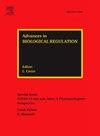揭示生物分子凝聚物在细胞功能和癌症中的作用
IF 2.4
Q1 Biochemistry, Genetics and Molecular Biology
引用次数: 0
摘要
生物分子凝聚物(BMCs)是通过液-液相分离形成的无膜细胞器,主要由支架分子和客户分子之间的多价相互作用驱动。这些动态区室使细胞能够在空间和时间上通过局部集中特定的生物分子来组织生化反应,从而提高了生产分子相互作用的频率,提高了反应速率。bmc是正常细胞生理的组成部分,核仁和Cajal小体都是典型的例子。然而,冷凝物的异常形成或调节与几种疾病的发病机制有关,包括神经退行性疾病、癌症和免疫相关疾病。关键残基的内在紊乱区域和疾病相关突变通常会促进病理性相分离,导致凝析液失调。全面了解BMC生物发生的分子原理对于开发新的非侵入性治疗策略至关重要,这些策略旨在调节疾病背景下的凝聚动力学。本文章由计算机程序翻译,如有差异,请以英文原文为准。
Unveiling the role of biomolecular condensates in cellular function and cancer
Biomolecular condensates (BMCs) are membrane-less organelles formed through liquid-liquid phase separation, primarily driven by multivalent interactions between scaffold and client molecules. These dynamic compartments enable cells to spatially and temporally organize biochemical reactions by locally concentrating specific biomolecules, thereby enhancing the frequency of productive molecular interactions and increasing reaction rates. BMCs are integral to normal cellular physiology, with well-characterized examples including the nucleolus and Cajal bodies. However, aberrant formation or regulation of condensates has been implicated in the pathogenesis of several diseases, including neurodegenerative disorders, cancer, and immune-related conditions. Intrinsically disordered regions and disease-associated mutations in key residues often promote pathological phase separation, contributing to condensate dysregulation. A comprehensive understanding of the molecular principles governing BMC biogenesis is critical for the development of novel, non-invasive therapeutic strategies aimed at modulating condensate dynamics in disease contexts.
求助全文
通过发布文献求助,成功后即可免费获取论文全文。
去求助
来源期刊

Advances in biological regulation
Biochemistry, Genetics and Molecular Biology-Molecular Medicine
CiteScore
8.90
自引率
0.00%
发文量
41
审稿时长
17 days
 求助内容:
求助内容: 应助结果提醒方式:
应助结果提醒方式:


